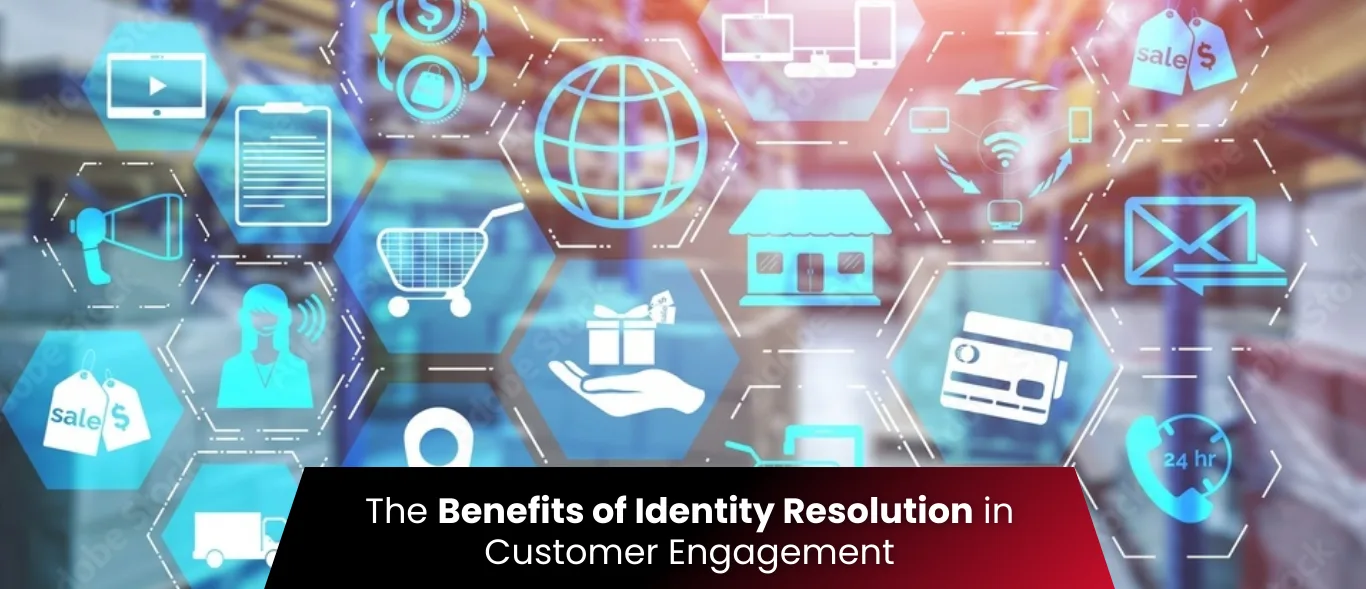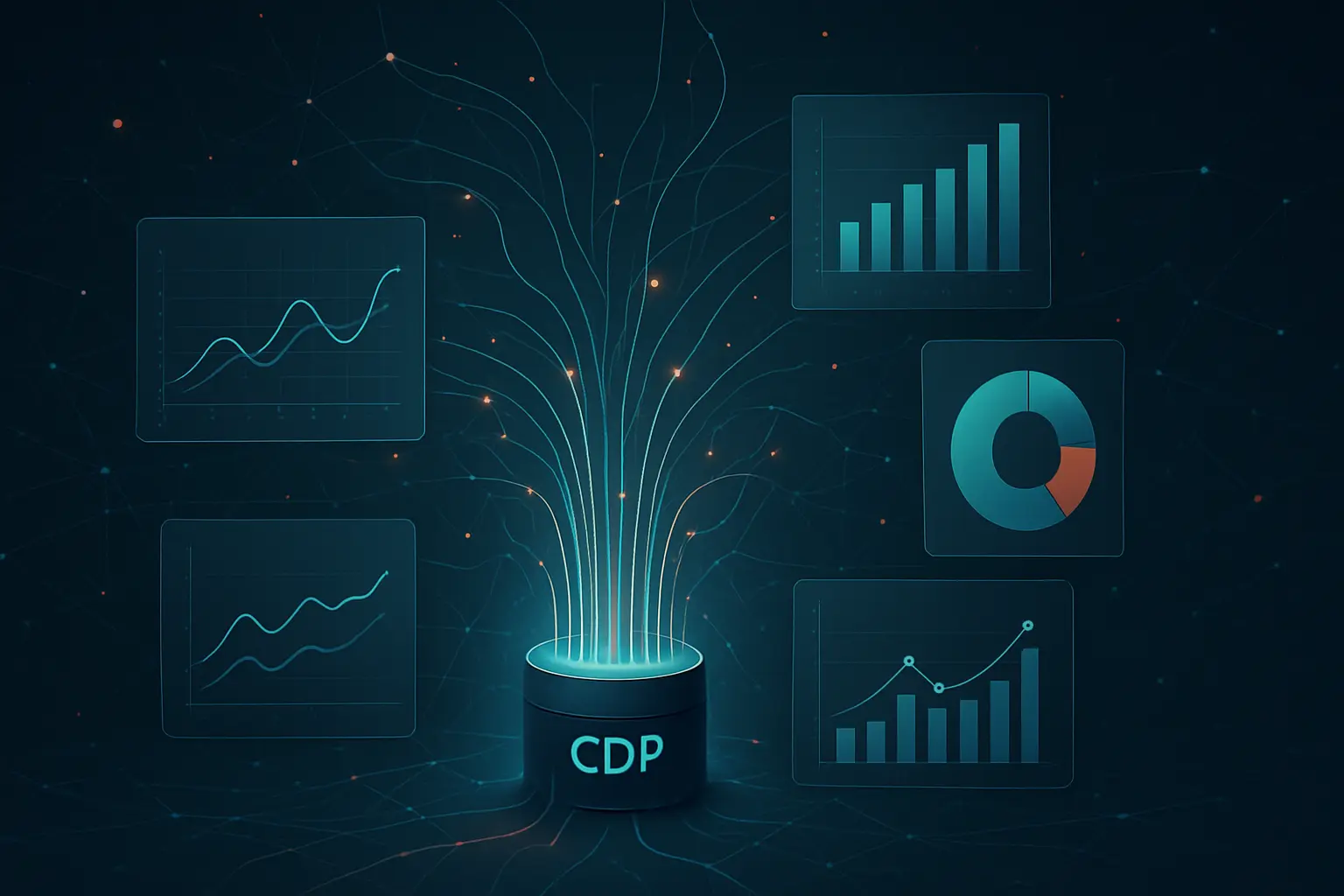Today's marketers have to thread the needle between providing customers an experience that is both personalized, without overstepping into uncanny levels of insight. This means you need a fresh approach to provide a unified customer experience.
Speaking in marketing terms, this means a "360-degree view" of the customer, as it underpins how your brand interacts with customers over all the channels and touchpoints of their customer journey, such as desktops, phones, and tablets.
In this case, the benefits of identity resolution can help you remain competitive in today's highly competitive market.
In today's digital world, identity resolution solutions have become a vital component in maintaining security and privacy while delivering a personalized experience.
What is Identity (ID) Resolution?
Identity resolution is the process of associating online activity and information from multiple data sources with a specific user.
This can be done with modern AI and machine learning tools, and is of great interest to government entities, data brokers, advertisers, and marketers worldwide.
IDRes involves matching, merging, and cleaning data from various sources to create a comprehensive view of an individual's identity.
The purpose of identity resolution is to ensure that organizations have accurate and complete information about their customers or users, enabling them to provide a personalized and secure experience.
For example, a prospective customer who wants to engage with your brand or product may sign up for an account and use it as a guest, or they may discover your brand through your newsletter, interact with your website on social media, and make purchases online.
ID resolution links all of these user activities to the real audience that's engaging.
Marketing teams most widely use it to deliver the right message to their niche audiences.
It involves a combination of detective and puzzle-solving work to attract potential customers.
In this article, let's explore identity resolution in detail, including its benefits, challenges, and use cases.
Benefits of Identity Resolution
Identity resolution provides several benefits to organizations, including:
Personalization: By having a comprehensive view of a customer's identity, organizations can offer a personalized experience to customers.
This can include personalized recommendations, offers, and communication.
Improved Security: It helps organizations identify fraudulent activities and take steps to prevent such activities from occurring.
It helps to detect and prevent account takeover attacks, identity theft, and other forms of fraud.
Better Data Quality: This technique helps clean and merge data from multiple sources, ensuring that organizations have accurate and complete information about their customers, and that the data footprint is small enough to be easily managed and protected.
Compliance: It helps organizations comply with various regulatory requirements related to privacy and security.
Ready to build a 360-degree view of your customers? >>>> Schedule a free consultation
Challenges of Identity Resolution
Despite its benefits, identity resolution software is not without its challenges. Some of the challenges of identity resolution include:
Data Quality: It relies on high-quality data to be effective. If the data is incomplete or inaccurate, the process of identity resolution can be challenging.
Data Privacy: This tool involves collecting and processing personal information, which raises concerns regarding data privacy.
Organizations must ensure that they have appropriate safeguards in place to protect the privacy of their customers.
Data Integration: It involves merging data from multiple sources.
This can be challenging, as the data may need to be formatted or cleaned to be usable.
Cost: Due to the amount of time-intensive steps involved, such as collecting, cleansing, and merging data from disparate sources, Identity resolution can often be a costly process.
In addition, there are other challenges a business faces while implementing ID resolution:
a) No customer specifics: The customer is simply a transaction, an ID, a sign-in, or a number, and there is no specific detail about their interests, devices used, and so on.
b) Disconnected online identities of an individual: Synchronizing an individual's online identities is a complicated task because of technology silos, non-persistent data, and loss of data, as many vendors are involved.
Today, consumers engage with and access content across multiple touchpoints and channels on various devices.
It isn't easy to identify all the digital sources associated with the consumer's identity.
c) Campaigns are planned on assumptions: Campaigns are designed on estimations; based on cookies, one can identify the primary device, but everything else is simply an assumption.
Due to the complexity of identifying individual customer preferences, businesses typically create basic campaigns, which often target a limited number of consumer prospects.
The problem becomes even more critical when the customer changes devices or platforms; whatever engagement was built on earlier channels is susceptible to loss.
Identity Resolution Use Cases
IDRes has numerous use cases in various industries. Some of the use cases for identity resolution are:
Healthcare: This technique is crucial in healthcare, where accurate patient identification is vital for delivering effective and safe care.
Identity resolution enables healthcare providers to have a comprehensive view of their patients' medical histories, thereby helping to prevent medical errors and improve patient outcomes.
Finance: This method is crucial in preventing fraud. It helps to detect and prevent account takeover attacks, identity theft, and other forms of fraud.
Retail: It is used in retail to provide a personalized shopping experience to customers.
By having a comprehensive view of a customer's identity, retailers can provide personalized recommendations and offers.
E-commerce: It is essential in this context. Identity resolution helps detect and prevent fraudulent transactions, providing a seamless and secure shopping experience for customers.
Government: This tool is used in government affairs to ensure that citizens are accurately identified and would-be identity thieves do not falsely claim their government benefits.
It also enables law enforcement to easily determine whether a person of interest is a repeat offender.
Insurance: This technique is utilized in the insurance industry to help detect and prevent fraudulent claims, while also providing personalized insurance products to customers.
Identity vs. Entity Resolution
In data management, it is common to encounter the terms "identity resolution" and "entity resolution," which marketers often use interchangeably. However, they are not the same thing.
Identity resolution is the process of identifying the unique identity of an individual or entity.
This process involves gathering and consolidating all relevant data for an individual or entity, such as name, address, phone number, email, and other similar details, and linking them together to create a comprehensive and accurate representation of that identity.
On the other hand, entity resolution is the process of matching and deduplicating multiple records that refer to the same real-world entity.
This process involves comparing the attributes of the records, such as name, address, and date of birth, and determining whether they belong to the same entity or not.
If they do, the records merge into a single representation of the entity, eliminating any duplicates.
To better understand the difference between the benefits of identity resolution and entity resolution, consider the following example:
Suppose a healthcare provider has multiple records for a patient named John Smith. The identity resolution process would involve consolidating all the information from these records into a single, complete profile of John Smith.
A complete profile can contribute towards analytics, reporting, or other purposes.
The entity resolution process involves identifying and merging duplicate records for John Smith to ensure that the healthcare provider has an accurate and complete view of his medical history.
In short, identity resolution is a digital identification platform that focuses on creating a complete and accurate representation of an individual or entity. In contrast, entity resolution focuses on identifying and eliminating duplicates across multiple records that refer to the same real-world entity.
Both processes are essential for effective data management, but they serve distinct purposes and employ different techniques.
Win new customers with customer journey mapping >>>> Read more
Types of identity resolution: Deterministic vs. Probabilistic
There are two main types:
- Deterministic
- Probabilistic
Deterministic identity resolution involves matching records based on an exact match of one or more attributes, such as name, address, or social security number.
This method is highly accurate but may fail when the data is incomplete, inconsistent, or has errors. On the other hand, probabilistic identity resolution uses a combination of attributes and statistical algorithms to determine the likelihood of a match.
This method is more flexible and can handle variations in data, but it also introduces a risk of false positives or false negatives.
Deterministic identity resolution is often beneficial in scenarios where high accuracy is critical, such as fraud detection or national security. In contrast, probabilistic identity resolution is more crucial in marketing or customer relationship management, where a high degree of accuracy is desirable but not essential.
Identity resolution tools help organizations to:
- Align first-, second, and third-party data sources into a unified customer view.
- Provide context and additional details to existing data, transforming siloed data into valuable customer experiences.
- Reach the right people through all channels at the right time.
- Determine if an anonymous person has visited their websites.
This technique can strengthen marketing and customer relationships. Therefore, businesses must select the most effective identity resolution platform to drive their overall business success, considering both their short-term and long-term objectives.
This concept is essential for marketers, and with lots of identity resolution vendors, the challenge for businesses is to find the right one.
But they should look at the following questions before choosing the identity resolution provider:
- What constitutes their data?
- Where do they source their data from?
- How frequently do they update their data?
- What types of quality checks do they conduct on their data?
- What kind of data coverage do they have?
How can Express Analytics help?
Express Analytics is one of the leading identity resolution companies in the United States, with expertise in predicting consumer behaviors.
Furthermore, our AI-oriented customer segmentation tool combines your first-party demographic and behavioral data to provide a comprehensive view of customers interacting with your website or brand. This enables you to actively reach out to niche customers with messaging and an effective strategy tailored to their characteristics.
Conclusion
Identity resolution is essential to maintaining security and privacy in today's digital world. Organizations can provide a personalized and secure experience to their customers by having a comprehensive view of their identity. It has numerous use cases in various industries, including healthcare, marketing & advertising, IT, operations, finance, and retail.


